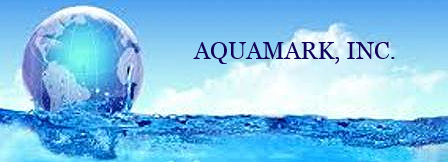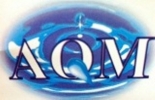

Searching
AQ 131
Public awareness of the need to protect our environment from hazardous elements is growing at any ever-increasing rate.
Much of this attention is directed towards industry and the hazardous wastes generated by various industrial processes. Pressure from the public, and particularly from pro-environmental organizations, are impelling governments to place tighter restrictions on industry regarding the disposal of their hazardous wastes. High penalties are being levied on industrial polluters. Industry has, and must continue to initiate stringent controls of such hazardous wastes and, wherever possible, eliminate them.
Metal - working industries have been pinpointed as generators of hazardous wastes. primarily in their process wastewater, which often contains toxic metals. Such hazardous materials must be removed from the water before it is discharged or reused.
In addition, water shortages plus restrictions and prohibition on land disposal of hazardous wastes, (including sludge from wastewater treatment) are forcing industry to initiate programs for waste reduction and detoxification, resource recovery and water reused.
To help industry achieve these goals, AQUAMARK, INC. has developed products for wastewatr treatment, recovery and conversion of process rediduals, and water reuse.
One such product is AQ131 a proprietary reagent for removing and recovery of metals from process wastewater and ground waters, as well as stabilizer, which permanently insolubilizes metals to a non-toxic and non-leachable form. This pamphlet contains information on AQ131 and it's uses. Contact us to discuss specific applications and for samples to perform bench scale jar tests and treatability studies.
AQ131 Precipitant - Activated Sludge Treatment - POTW
DESCRIPTION
AQ131 is rapidly biodegradable organic reagent. It is non-toxic to microorganisms in it's neat form, and produces relatively nont-toxic oxidation by-products and metallic precipitates. AQ131 is normally utilized as a precipitating reagent for chelated / complex heavy metals. When dosed with it's Ion Control Systems, no excess product is discharged.
CHARACTERISTICS
Chemical Family: Polythiocarbonate
Microbiocide Characteristics: None - exhibits no toxic characteristics (AQ131 is not a carbamate.)
Biodegrading By-Products: Elemental Sulfur and Carbon Dioxide.
Corrosion Characteristics: Neutral - non - discemible corrosion to ferrous and/or non-ferrous metals.
HAZARD DATA
RCRA Hazard Class: (if discarded) Non-Hazardous
EPA Priority: None
DOT Hazard Classification: Non-Hazardous
AQUATIC TOXICITY
AQ131 such as copper (copper thiocarbonate/sulfide) is essentially insoluble and not available to organisms. The copper thiocarbonate/sulfide exhibits no noted toxicity where as copper ions are well established as a toxic reducer and a biodegradable organic. As such, it will consume oxygen until fully degraded to carbon dioxide and elemental sulfur. With the exception of minor oxygen consumption, no toxic characteristics are noted.
PRODUCT COMPARISON
Sodium (or Potassium) Dimethyl (or Diethyl) dithiocarbamate (DTC). Often used as a precipitant, but is also an effective microbiocide. It's precipitate, such as Copper Carbamate is an even more effective microbiocide.
Borohydride used as an effective precipitant, like AQ131 it does not exhibit toxic characteristics, but it does add Boron to the water stream, which can be deleterious to many agricultural products.
AQ131 PRECIPITANT / STABILIZER APPLICATIONS
WATEWATER TREATMENT
TOTAL PRECIPITAIPN - To precipitate an insoluble, no-hazardous by-product that readily passes the Toxicity Characteristics Leaching Procedure (TCLP) Test.
POLISHING - As a chelate - beaker precipitant following pH adjustment to ensure discharge compliace.
PRETREATMENT - Provide effective pretreatment for spent baths allowing for in-house treatment.
REDUCER - For hexavalent chromium reduction or deoxidizer. An effective reducing agent, antioxidant and alkalinity builder.
MINE WASTEWATER - Removes heavy metals to allow discharge compliance.
SLUDGE REDUCTION - Allows a 10% to 20% overall reduction in sludge volume when replacing DTC or hydroxide precipitation. Reduces sludge by over 90% when replacing iron, such as ferrous sulfate, ferric chloride, iron generators, etc.
SCRUBBER WASTEWATER - Heavy metals removal.
OTHER APPLICATIONS
MINING - Precious metal recovery from non-cyanide lixiviate.
WASTE OIL - Removes heavy metals (lead, cadmium, etc.) and reduces chlorine to legal limits.
AQUIFER/GROUNDWATER RESTORATION - Treatment technology for inorganics.
MERCURY REMOVAL FROM NATURAL GAS - To remove toxic mercury from pipelines.
STABILIZATION/DETOXIFICATION
SLUDGE STABLIIZER - May be blended with existing sludge to prevent leaching of heavy metals.
FLY ASH STABILIZER - Blend with fly ash as needed to maintain non-hazardous classification.
SOIL STABILIZER/REMEDIAL SITE - In-situ and ex-situ uses to prevent migration of toxic heavy metals in contaminated soil.
SEDIMENT STABILIZATION - To detoxify and stabilize heavy metals in sediments and thereby prevents the migration of toxic heavy metals.
FOUNDRY SLUDGE DETOXIFICATION - Blended with slag to detoxify metals.
MUNICIPAL SLUDGE STABILIZATION - Maintains Class 1 sludge by converting toxic heavy metal to non-leachable metals.
CHROMIUM TAILINGS DETOXIFICATION - To reduce and detoxify chromium and other toxic metals by in-situ and ex-situ use to prevent migration.
SAFETY
AQ131 exhibits no toxic characteristics what so ever and is not a peticide product. No worker exposure to pesticides and no prohibited pesticide residue in discharge to sewer or other precipitants products.
AQ131 PRECIPITANT / STABILIZER
General Information
AQ131 (Na2CS3) is therefore oxidized by atomospheric oxygen to form sulfites, sulfates, and carbon dioxide. This is an organic sulfide polymer with a high oxygen demand. In the enviroment reacted.
AQ131 Such as metallic thiocarbonate/sulfide, has NO oxygen demand and cannot be degraded by atmospheric oxygen. The reacted product is similar to the wast products of microorganisms and is therefore not considered a food source for biological activity. Additionally, the reacted product cannot be digested (broken down) under normal environmental conditions due to its double bonded carbon = sulfur reacted.
AQ131 The end products are elemental sulfur, metallic salt and carbon dioxide. Under laboratory conditions, a combination of strong oxidizers and strong acids are required to digest the reacted.
AQ131 has these same characteristics in that the stability of the metallic polythiocarbonate/sulfide. Is maintained by the single double-bonded sulfur to carbon link and the two single sulfur-sulfur to metal bond links as shown above. Under normal environmental conditions, sulfate-converting microorganisms create sulfid as a waste product, which then form metallic sulfides if metal ions are available. This is the general form of many mineral deposits, which are difficult to leach and have remained stable for millions of years. Reacted
AQ131 poses no concern to biological activity and/or typical fish species. It can be reasonably concluded that the reacted product does NOT allow the metal to be available to the organism and is essentially inert. The unreacted product shows not toxicity concern. Several lab and numerous empirical and practical studies have indicated that unreacted and reacted.
AQ131 does actually DETOXIFY the existing metallic species. Has the ability to convert soluble metallic forms such as hydroxides to the thiocarbonate/sulfide form. Any precipitate, which has a greater solubility, will be thus converted. In general terms, the greater the solubility, the greater the metal toxicity.
AQ131 offers the advantage of extremly low solubility which allows for near total metals elimination from waste streams, EVEN in the presence of natural chelating compounds and manufactured chelating compounds.
